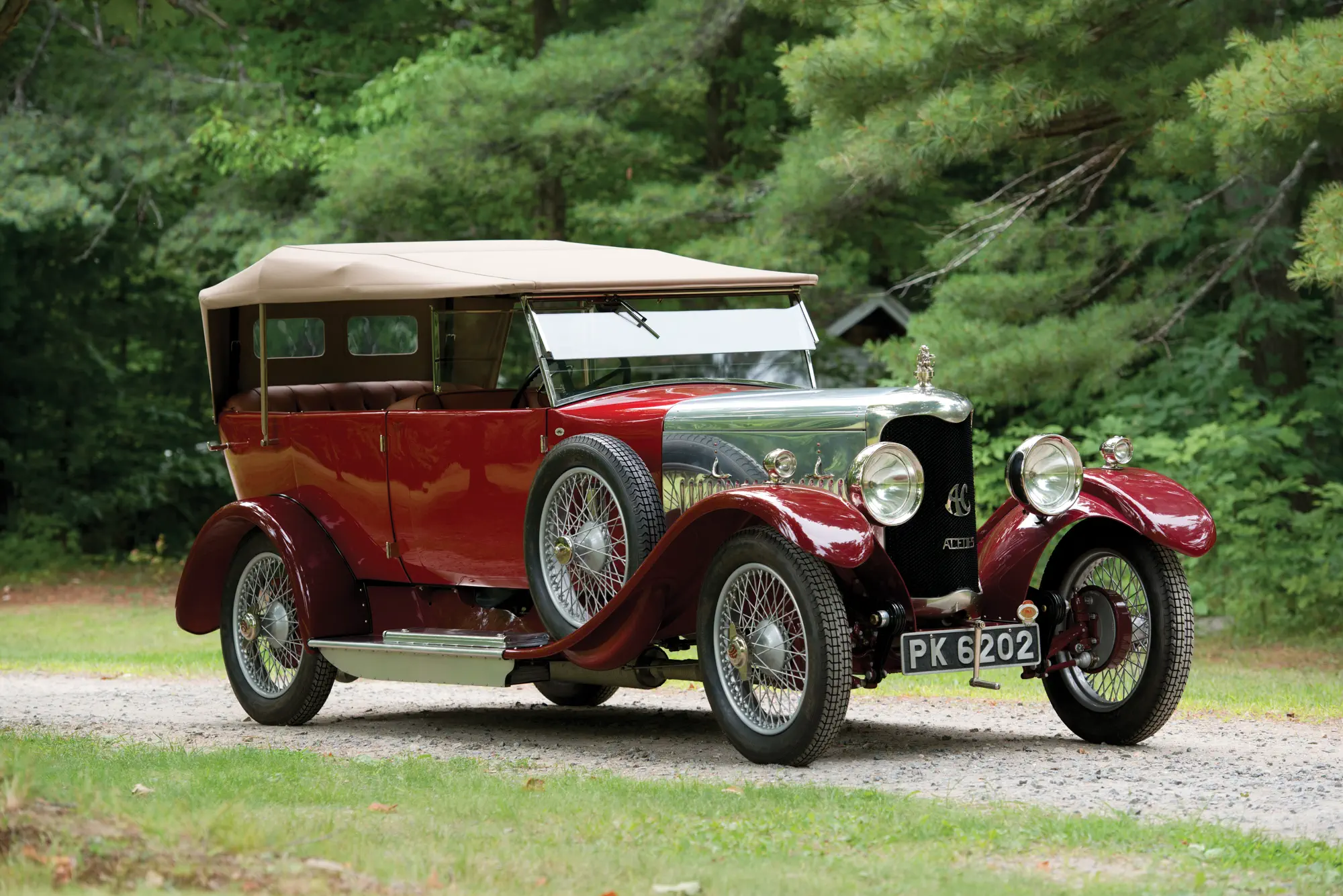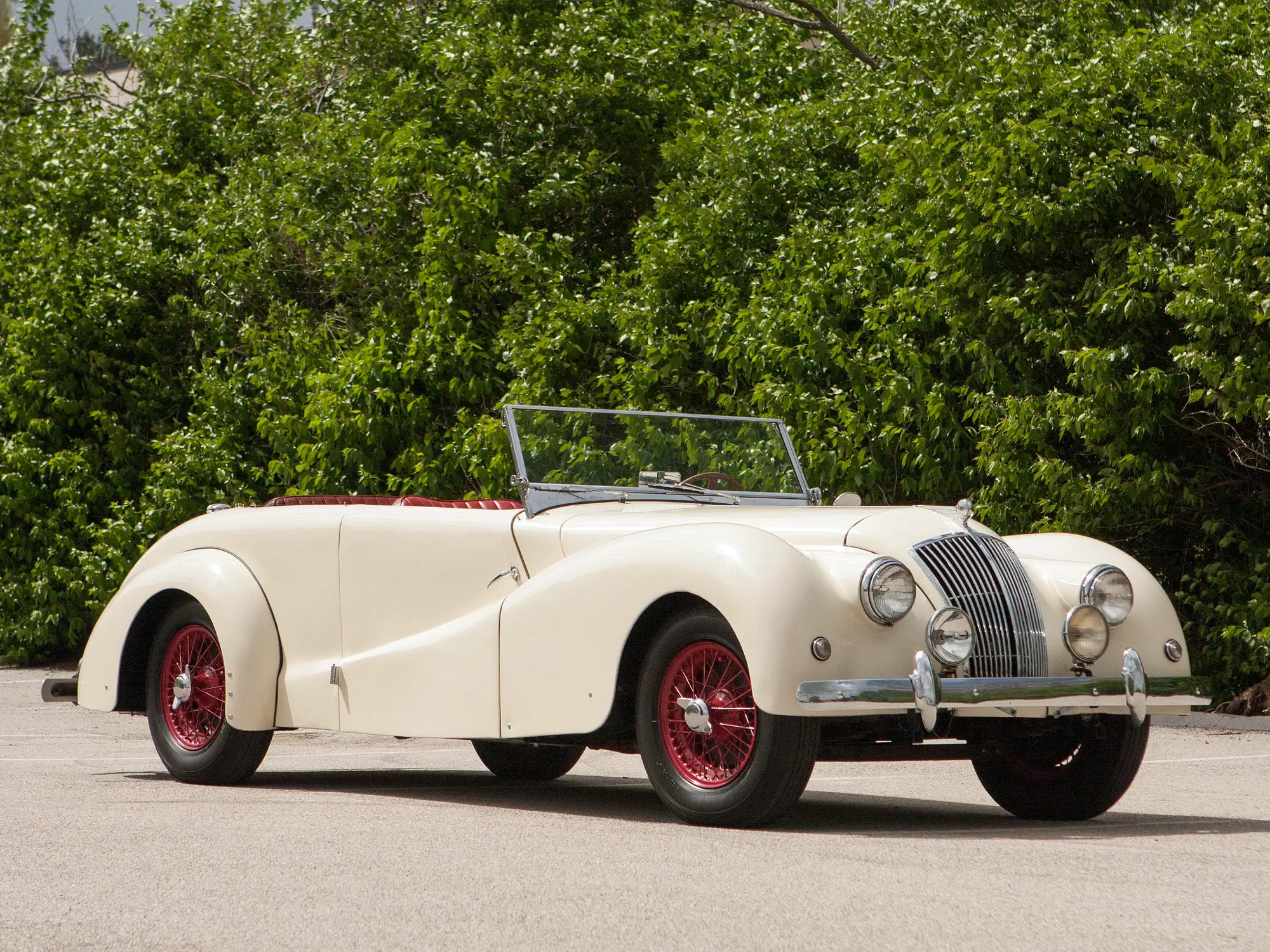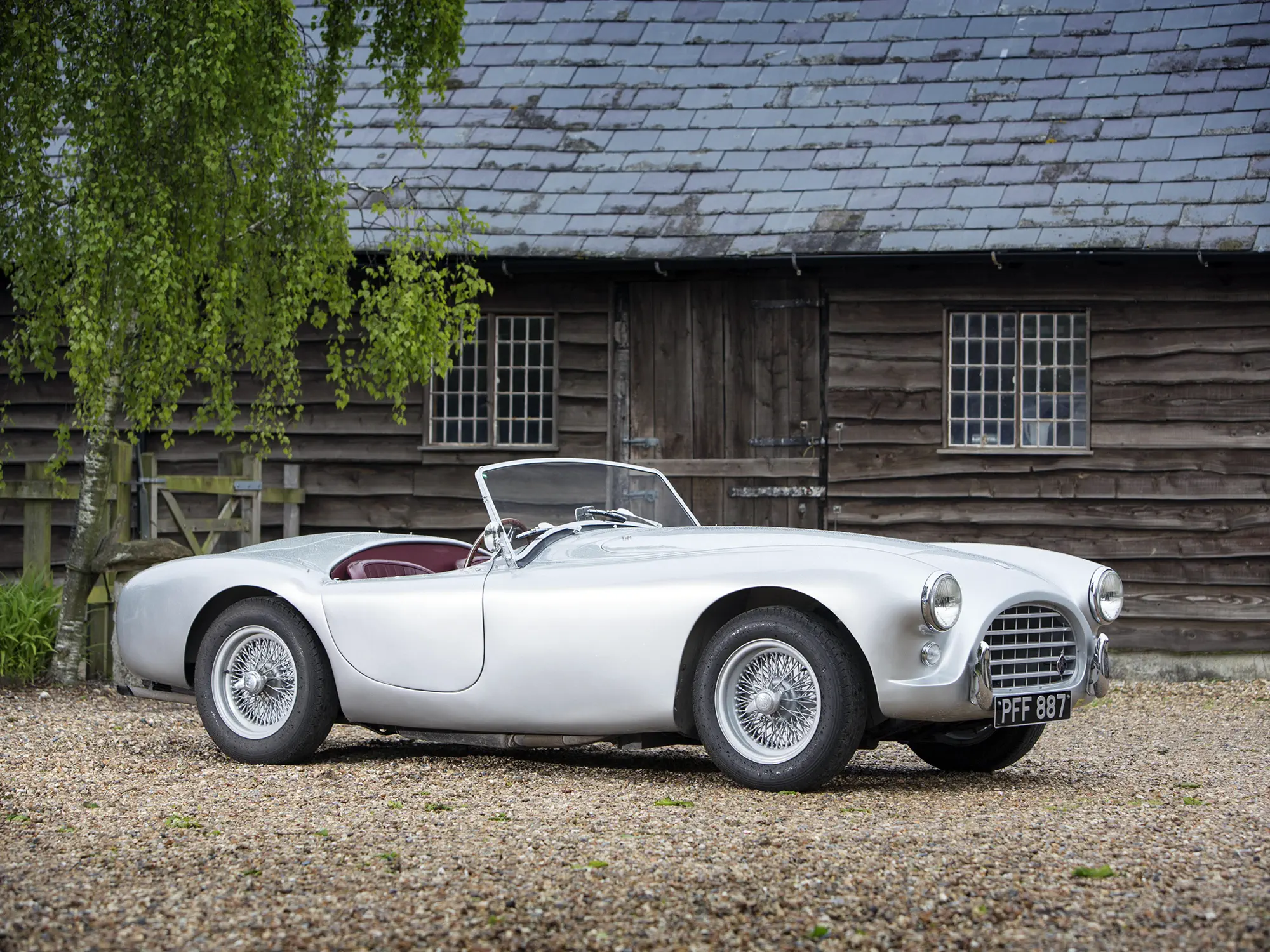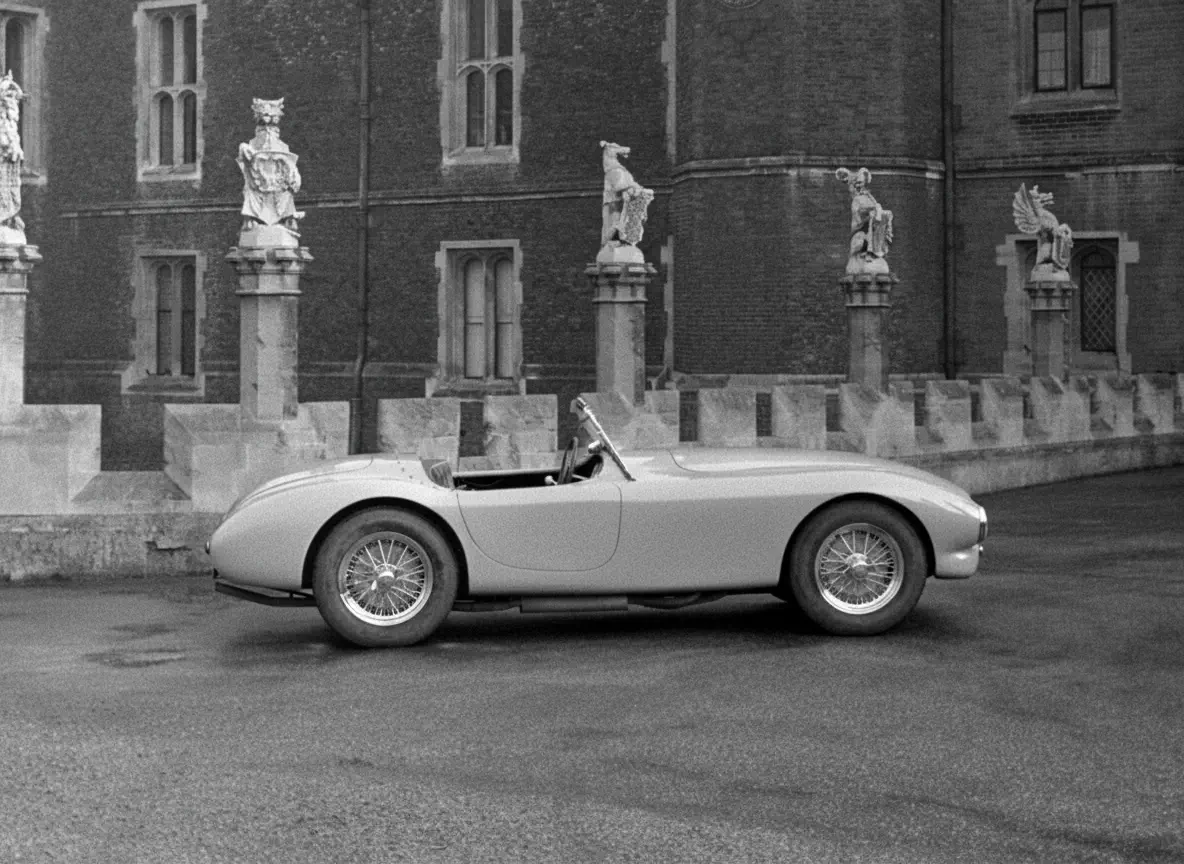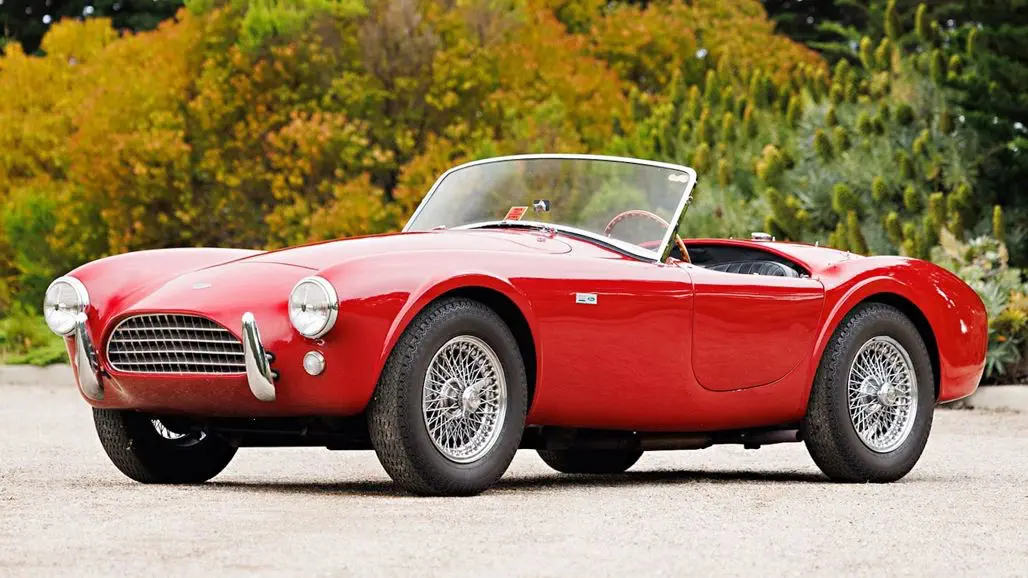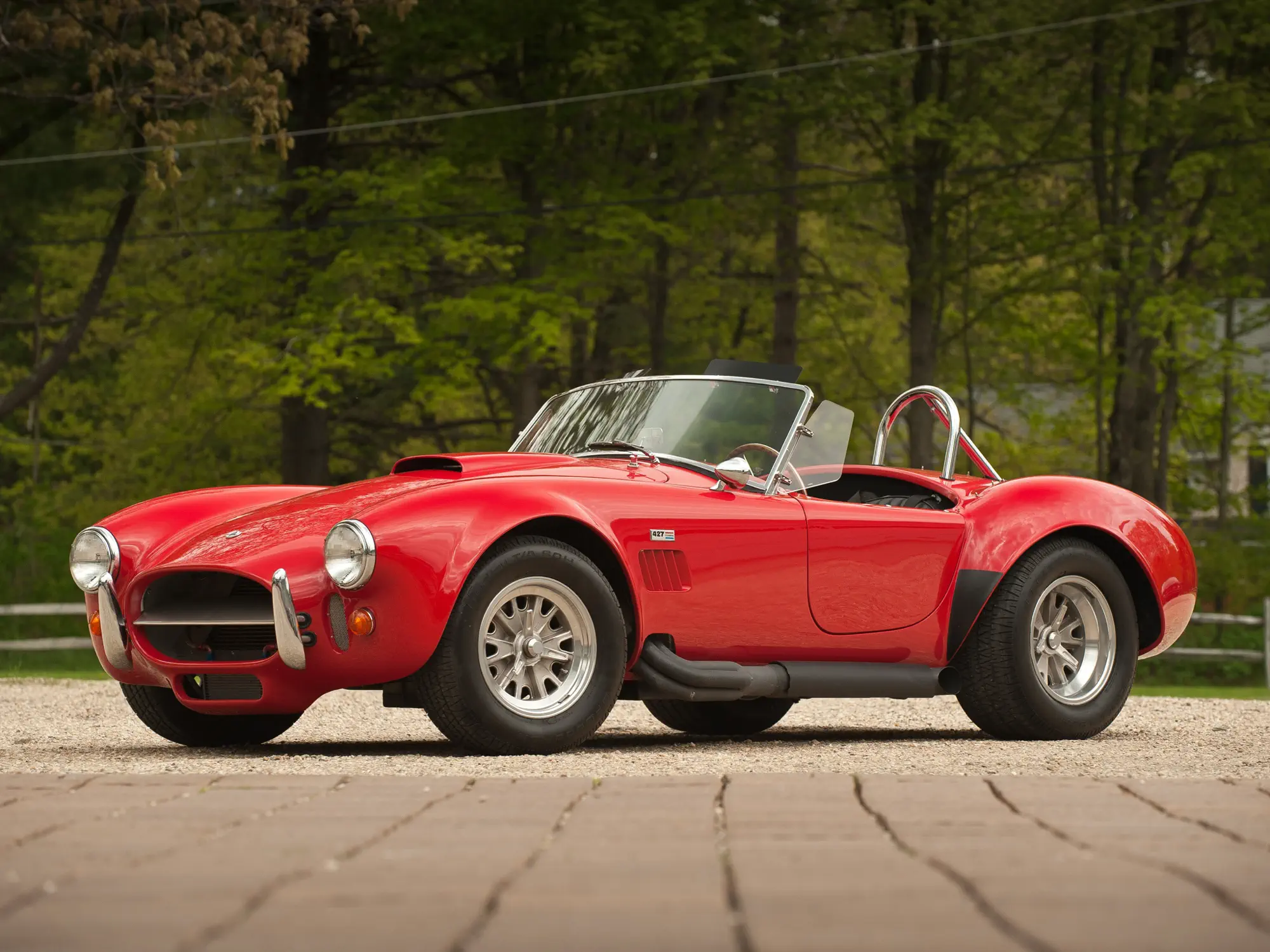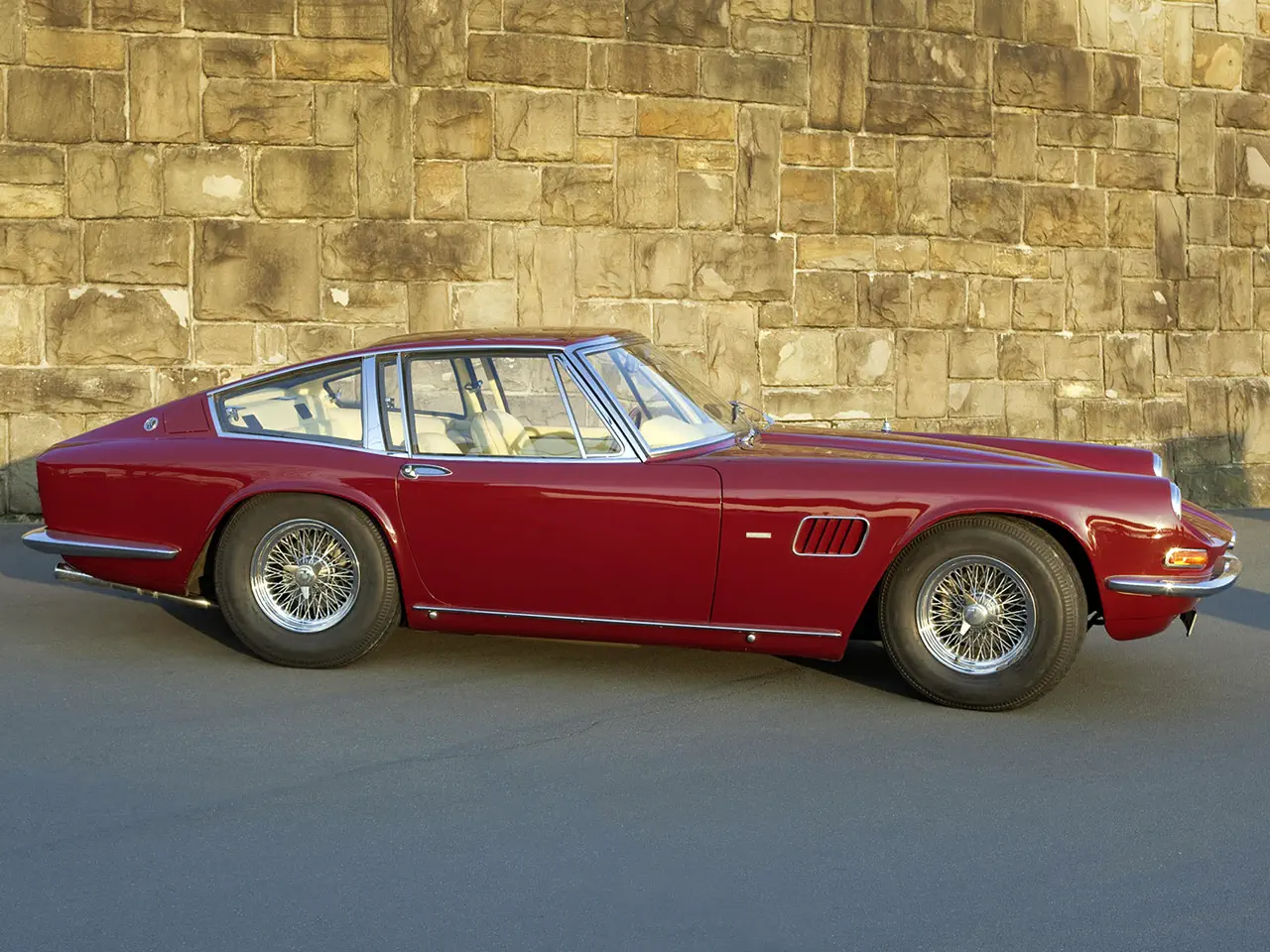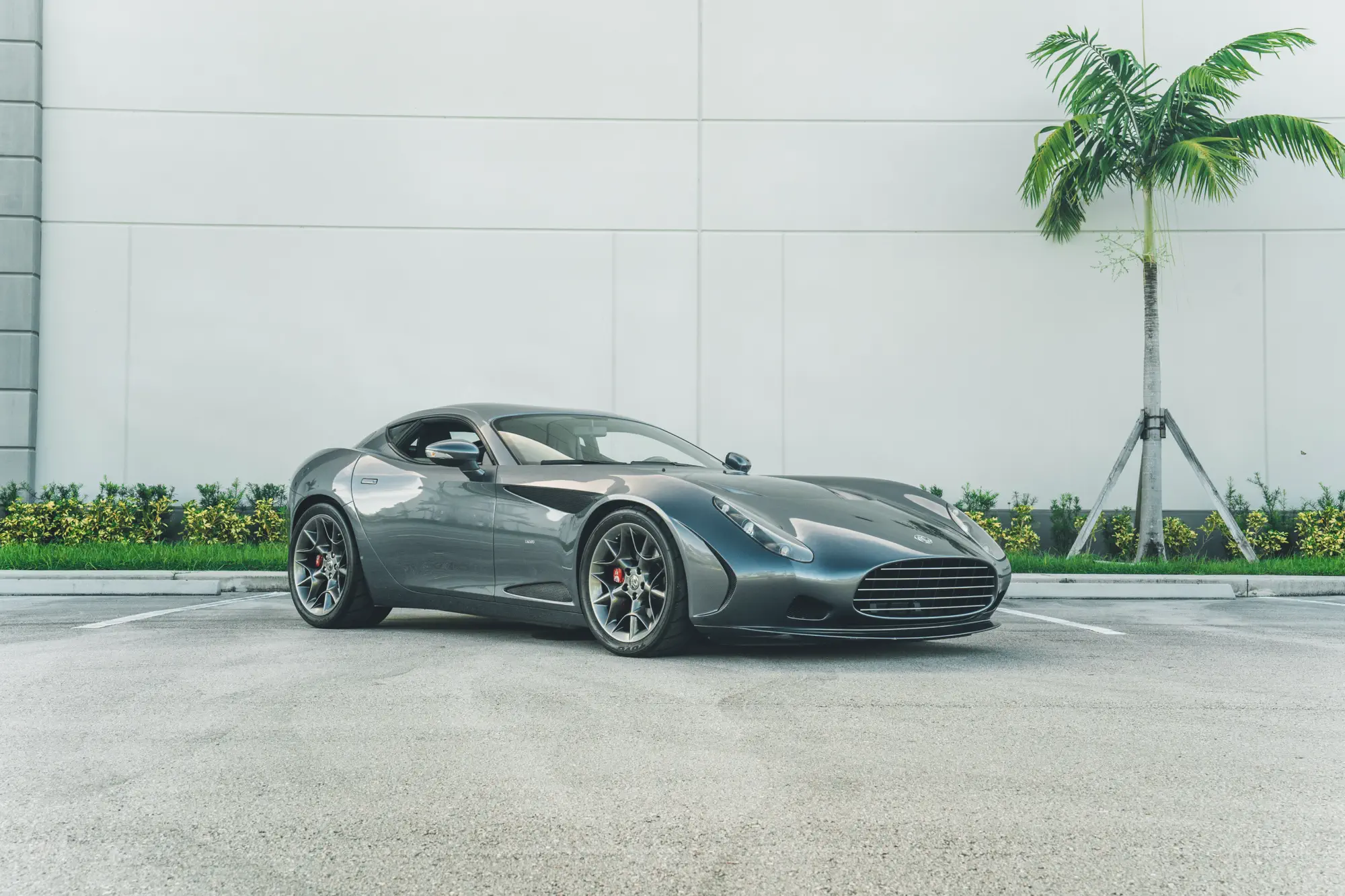AC: The Accidental Legend

AC Cars spent half a century building sensible, slightly peculiar cars for sensible, slightly peculiar people, before accidentally stumbling backwards into creating one of the most iconic, world-conquering sports cars of all time. The story of AC is not one of grand ambition or ruthless strategy. It's the story of a small, respectable British firm that happened to build a car so fundamentally right that a charismatic Texan chicken farmer could use it to take over the world.
AC's origins are long, complicated, and frankly, a bit dull, though also very British. It was founded in West Norwood, London, way back in 1901 by the Weller brothers, John and Arthur. John was the talented engineer, and Arthur presumably nodded encouragingly. The cash arrived in 1902 in the form of John Portwine, a prosperous local butcher and businessman who clearly had more faith in motorcars than most people had back then. Their first creation, the 20hp Weller Touring Car, was proudly displayed at the 1903 Crystal Palace Motor Show. Advanced engineering throughout, but one small problem: feedback suggested it would be far too expensive to ever sell.
In a shift worthy of a modern start-up, they junked the big car and focused on something actually marketable. A practical, three-wheeled delivery van launched in 1904: the "Autocarrier". Butchers, bakers, and candlestick makers loved it. It also gave the company its eventual name, as "Auto Carriers Ltd." was eventually shortened to just "AC". They followed it with a passenger version, the charmingly named "AC Sociable", which was essentially the van with seats for people who didn't mind arriving everywhere looking like they'd just delivered the groceries. In 1911, they moved to what would become their historic home: the Ferry Works factory in Thames Ditton, Surrey.
For a brief period, they weren't dull at all. John Weller designed a sophisticated overhead-cam six-cylinder engine in 1919, an advanced piece of engineering so fundamentally sound it would, almost unbelievably, remain in production until 1963. Forty-four years. The same basic engine. This attracted the famous racing driver and entrepreneur Selwyn F. Edge, who took control of the company in 1922 and immediately renamed it "AC Cars Ltd." Edge was all about speed and records. He went racing, setting a world record at Brooklands by becoming the first 1500cc car to cover 100 miles in one hour. In 1926, an AC won the Monte Carlo Rally, a first for any British marque.
This pure-bred racing focus proved divisive. Edge's management style (imagine a racing driver running a small Surrey factory) prompted the original founders, Weller and Portwine, to resign in disgust. By 1927, Edge himself was out, and the company fell into receivership. The men who saved it were William and Charles Hurlock, who acquired the firm in 1930. They had absolutely no interest in breaking records or winning rallies. They wanted a viable business. What followed was fifty years of determined, careful respectability. The Hurlocks built small numbers of elegant, well-made cars for people who valued craftsmanship over publicity. Park one outside a country club and nobody would raise an eyebrow. Park one at Brooklands and people would wonder if you'd taken a wrong turn.
Fortune Favours the Prepared Chassis
By 1953, the company needed a modern sports car. A racing car designer named John Tojeiro had developed a lightweight ladder-tube chassis based on an Italian design. AC bought the rights to it, commissioned a stunningly minimal aluminium body, and dropped in their ancient yet smooth 2.0-litre "Light Six" engine. The one designed back in 1919. They called it the AC Ace and debuted it at the Earl's Court Motor Show.
Where most British sports cars of the era looked like they'd been beaten into shape with agricultural implements, the Ace had genuine elegance. Low, wide, perfectly proportioned. With its all-independent suspension and lightweight construction, it could dance through corners with a delicacy that left rivals feeling clumsy and crude. The magazines clocked it at 103 mph, genuinely quick for 1953. The 11.4-second sprint to 60 reminded you that the ancient engine was working with barely two litres, though it did so with remarkable smoothness. A gorgeous hardtop, the Aceca, followed in 1954.
The old AC engine held it back. Then, in 1956, someone at AC had the sense to offer Bristol's race-bred straight-six as an option. This was an engine with actual racing pedigree, something that had won races rather than just touring around the Cotswolds. With up to 128 bhp, the AC Ace-Bristol became a genuine weapon.
It was a huge success in America. Club racers discovered they could embarrass Jaguars and Corvettes costing twice as much. The car was continuously improved: front disc brakes arrived, first as an option, then as standard. Better gearboxes replaced the original's slightly vague changes. By 1960, you could buy a properly quick, beautifully handling sports car from a small factory in Thames Ditton. The Hurlocks, to their credit, never let this success go to their heads. They kept production small, quality high, ambitions modest.
A Letter that Arrives at Exactly the Right Moment
By the early 1960s, the Ace faced a crisis. Bristol was ceasing production of its six-cylinder engine. AC scrambled and switched to a tuned 2.6-litre Ford Zephyr engine, which everybody knew was a poor substitute. The Ace-Bristol had been a thoroughbred. The Ford-powered version was more like a cart horse wearing racing silks.
Across the Atlantic, a retired racing driver named Carroll Shelby had an idea. Shelby was Texan, charismatic, and when he wasn't winning at Le Mans, he was busy making a fortune farming chickens. He wanted to build an American sports car that could beat Chevrolet's Corvette. Simple plan: take an American V8 engine, shove it into a British sports car chassis, and see what happens.
Shelby wrote a letter to AC Cars in Thames Ditton. It arrived at the exact moment AC had lost its Bristol engine supply and was staring at a future of Ford Zephyr mediocrity. They had a brilliant chassis with no engine. Shelby had the promise of an engine (Ford's new lightweight 260 cubic inch V8) with no car to put it in.
The Monster Wakes Up
AC air-freighted a chassis to Shelby's workshop in California. Mostly unchanged from the Ace. Shelby's team, which included Ken Miles, shoehorned in Ford's V8. They beefed up the running gear. The result was automotive dynamite wrapped in aluminium. They called it the Cobra.
Miles took the first prototype for a test drive around the California hills. The car could smoke its rear wheels through three gears if you were brave enough to try. They sorted the handling, stiffened the springs, got the geometry right so the chassis could cope with triple the original power. The car that emerged retained the Ace's fine balance with the ability to annihilate almost anything else on the road. Where the Ace had been a gentleman's sports car, the Cobra was a savage weapon.
The engine grew from the 260 V8 to the more powerful 289. In the UK, AC built and sold its own "AC Cobra" versions, distinct from Shelby's American cars. These machines, with "COB" (Cobra Britain) chassis numbers, were raced successfully by British drivers like Bruce Ropner. The works team even had a crack at Le Mans in 1964 with a special coupé.
It went spectacularly wrong. The AC Le Mans Coupé was clocked at 180 mph on the Mulsanne Straight, which in 1964 was terrifying velocity. Then a rear tyre exploded. The car spun, rolled, and disintegrated at racing speed. The driver, Cliff Davis, was thrown from the wreckage. He survived, barely. The car did not. AC's factory racing programme ended in a shower of aluminium shards on a French road.
The ultimate expression came later, when Shelby and AC developed a new, stronger coil-spring chassis for Ford's colossal 7-litre, 427 cubic inch V8. With over 400 horsepower in something weighing about as much as a modern city car, the AC Cobra 427 became a barely contained explosion. Faster in a straight line than anything except race cars. On the track, in the hands of drivers like Miles and Dan Gurney, the aerodynamic Daytona Coupes won the 1965 World Manufacturers' GT Championship, humiliating Ferrari in the process.
Thames Ditton, through no grand ambition of its own, had accidentally provided the foundation for a giant-killer.
The Impossible Task of Perfection's Sequel
How do you follow a legend? AC's answer was to try sophistication. The 1967 AC 428, often known as the AC Frua, combined an American V8 with Italian styling. It used a stretched Cobra 427 chassis and that same monster 7-litre V8, wrapped in a sleek, steel body designed by the Italian coachbuilder Pietro Frua.
It was devastatingly quick, comfortable enough to cross continents, with impeccable manners and enough power to embarrass anything that challenged it. The economics, however, were absurd. The chassis had to be built in England, shipped to Italy to be bodied, then shipped back to England for the engine and final assembly. All this shipping meant it cost more than an Aston Martin or a Ferrari. Worse still, nobody quite knew what it was trying to be. The Cobra's appeal was its savagery. The 428 was trying to be civilised, which rather missed the point.
Production trickled to a halt in 1973 after just 80 cars. Wealthy gentlemen who wanted a refined grand tourer bought Ferraris. Those who wanted something visceral bought Cobras. The 428 fell between two stools and landed hard.
When Fortune Stops Favouring You
The end of the 428 marked the end of AC's time as a significant player. The 1970s oil crises and punishing recessions hit small, hand-built manufacturers with particular cruelty. The company tried moving to a new, mid-engine car, the 3000ME. It arrived too late, cost too much, and nobody particularly wanted it. By the early 1980s, the game was up.
The historic Thames Ditton works were sold off in 1982. Seventy years of history, gone. The Hurlock family, who had stewarded the firm since 1930, finally sold their controlling interest by 1986. They'd kept AC alive through careful conservatism for half a century, only to watch fortune smile on the reckless Texan while their own measured approach led nowhere.
The AC name became valuable intellectual property that passed through various hands. Each new owner promised to revive the glory days. The rights and tooling for the Cobra were sold to Brian Angliss's Autokraft, which produced the "Mk IV" Cobra. Even this effort couldn't find long-term stability. A series of bankruptcies and doomed revivals followed through the 1990s and 2000s, each one promising more than it could deliver.
The Afterlife is Stranger Than the Life
And yet, AC refuses to die. Today, the company promotes itself as "Britain's oldest continuously operating vehicle manufacturer", which requires some creative interpretation of "continuously operating". After another revitalization in 2022, the brand exists as a modern boutique carmaker. Instead of sensible tourers for sensible people, it now sells cars that are arguably more unhinged than the 427.
You can buy a "new" AC Ace Classic with a carbon fibre body, powered by either a 300bhp Ford EcoBoost engine or, somewhat surreally, a 301bhp all-electric powertrain. If that's not enough, the company has announced the AC Cobra GT SuperSport: a modern carbon-bodied monster boasting a 5.0-litre V8 tuned to 1,025 horsepower. One thousand and twenty-five. In a car called an AC.
The sensible, peculiar firm from 1901 is long gone, replaced by a 21st-century builder of hyper-expensive, high-tech ghosts. AC's entire legacy rests on a single stroke of fortune: building a chassis so fundamentally right that when Carroll Shelby's letter arrived, they had the perfect foundation for someone else's masterpiece. They spent the first fifty years being carefully, deliberately modest. Then, through no grand plan of their own, they stumbled backwards into immortality. The Hurlocks would probably have found the whole thing rather vulgar.



